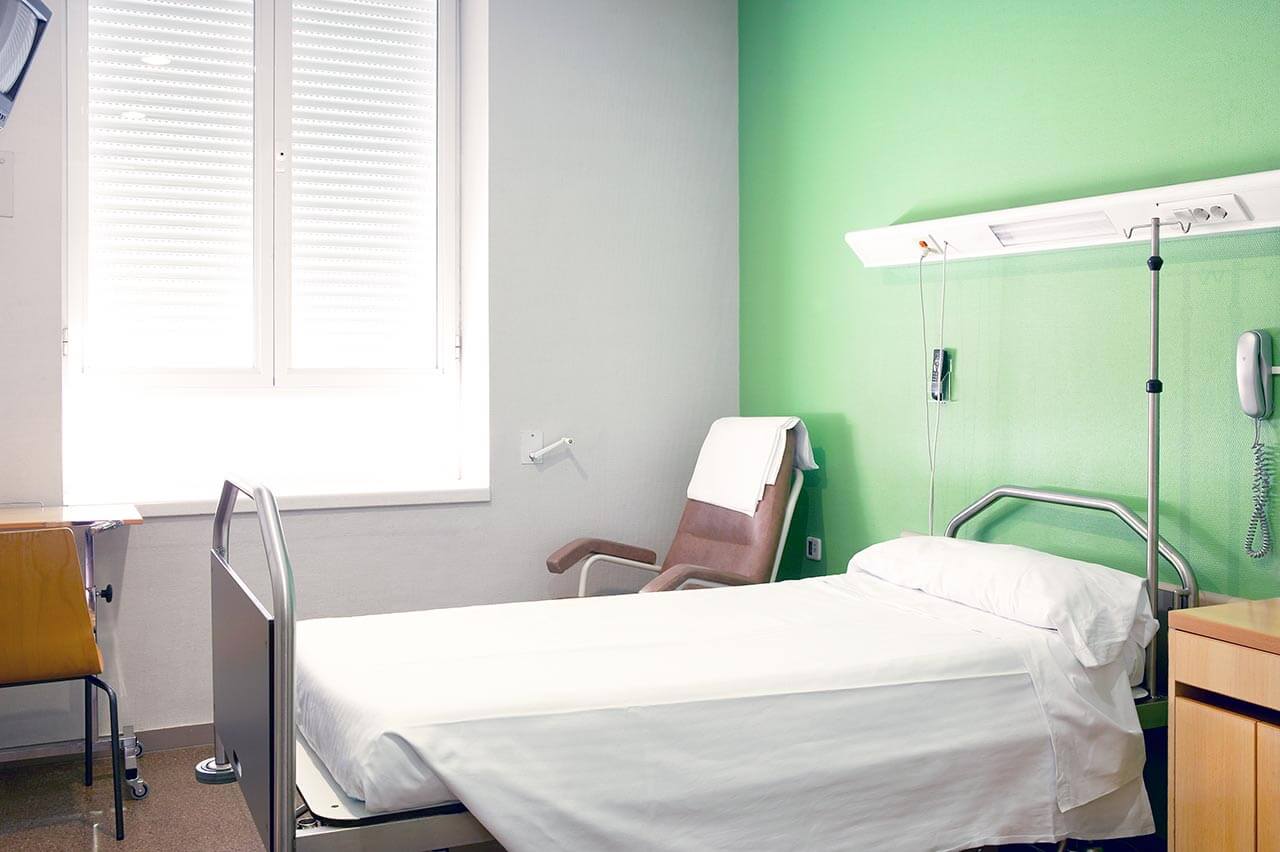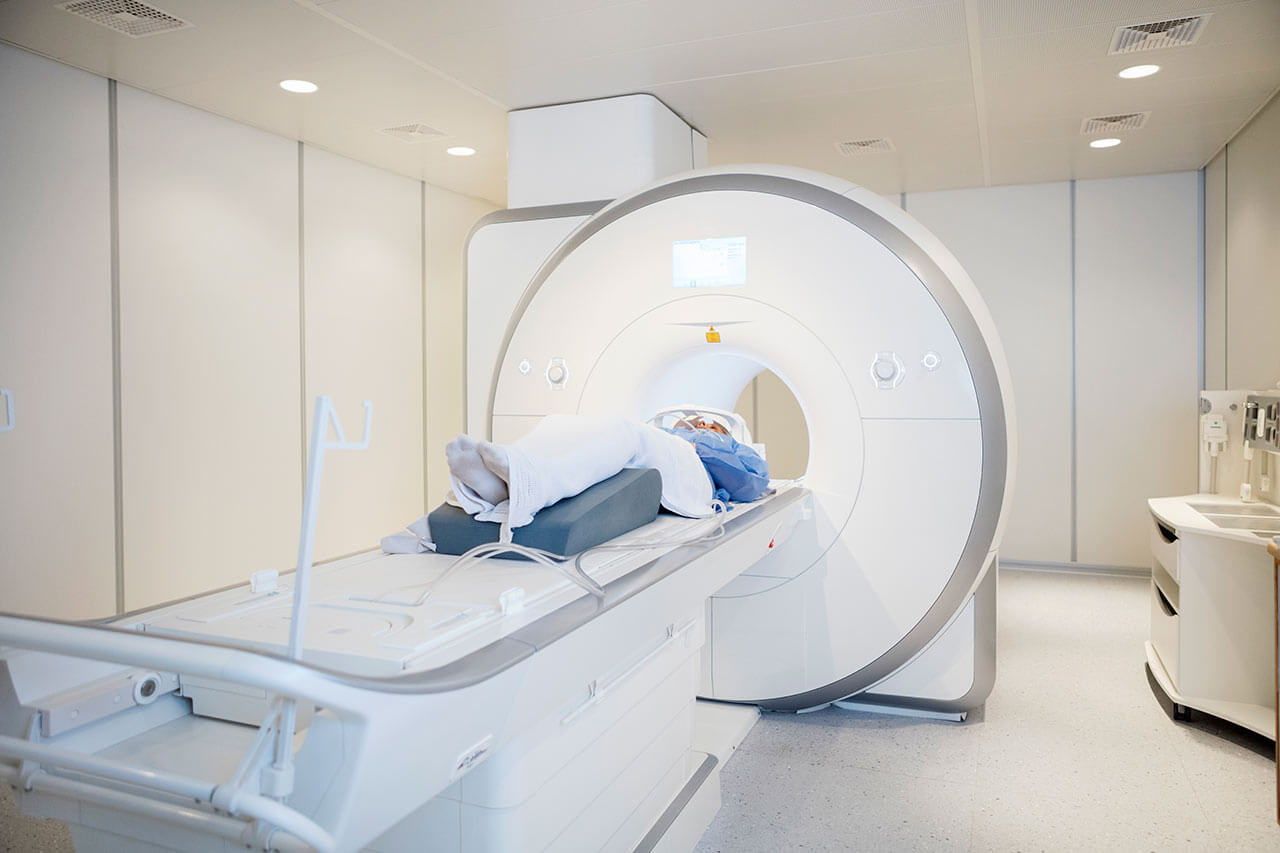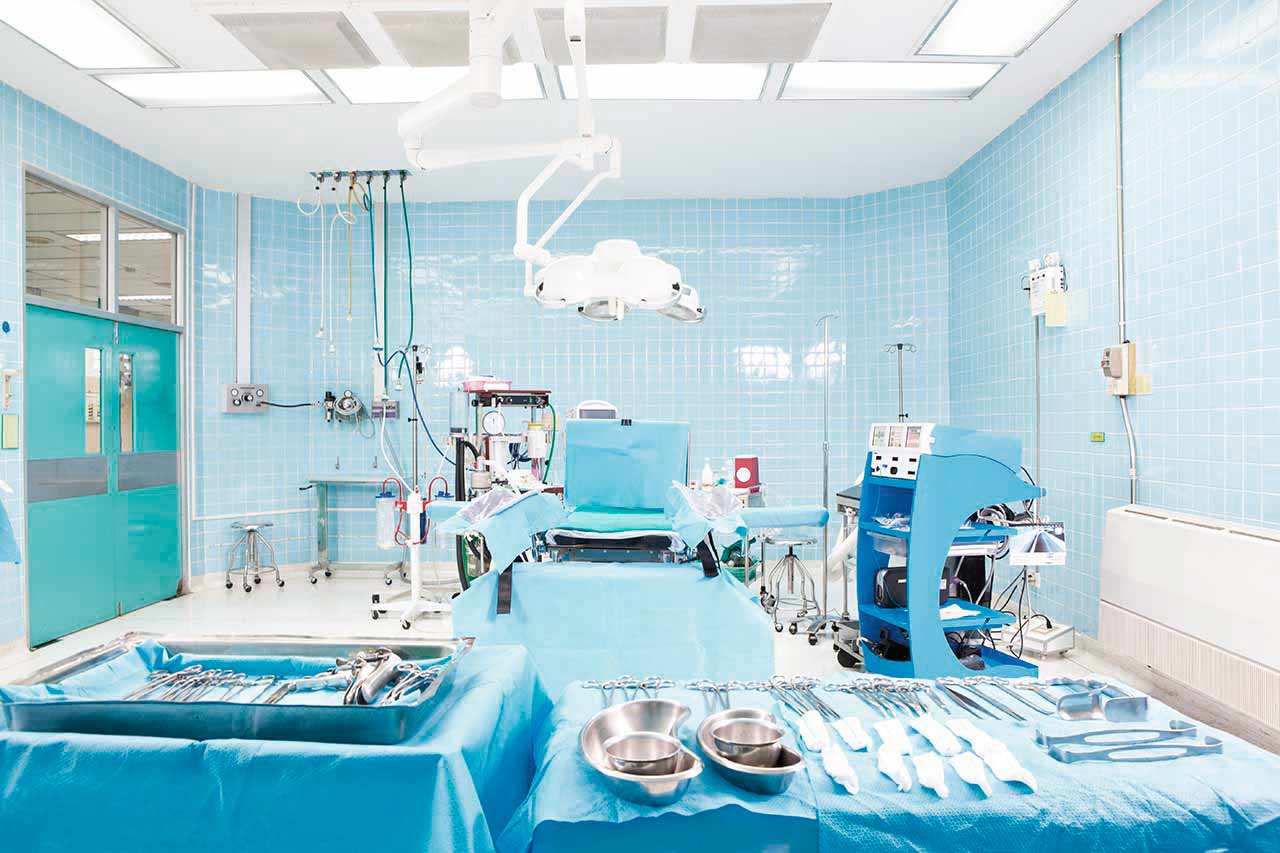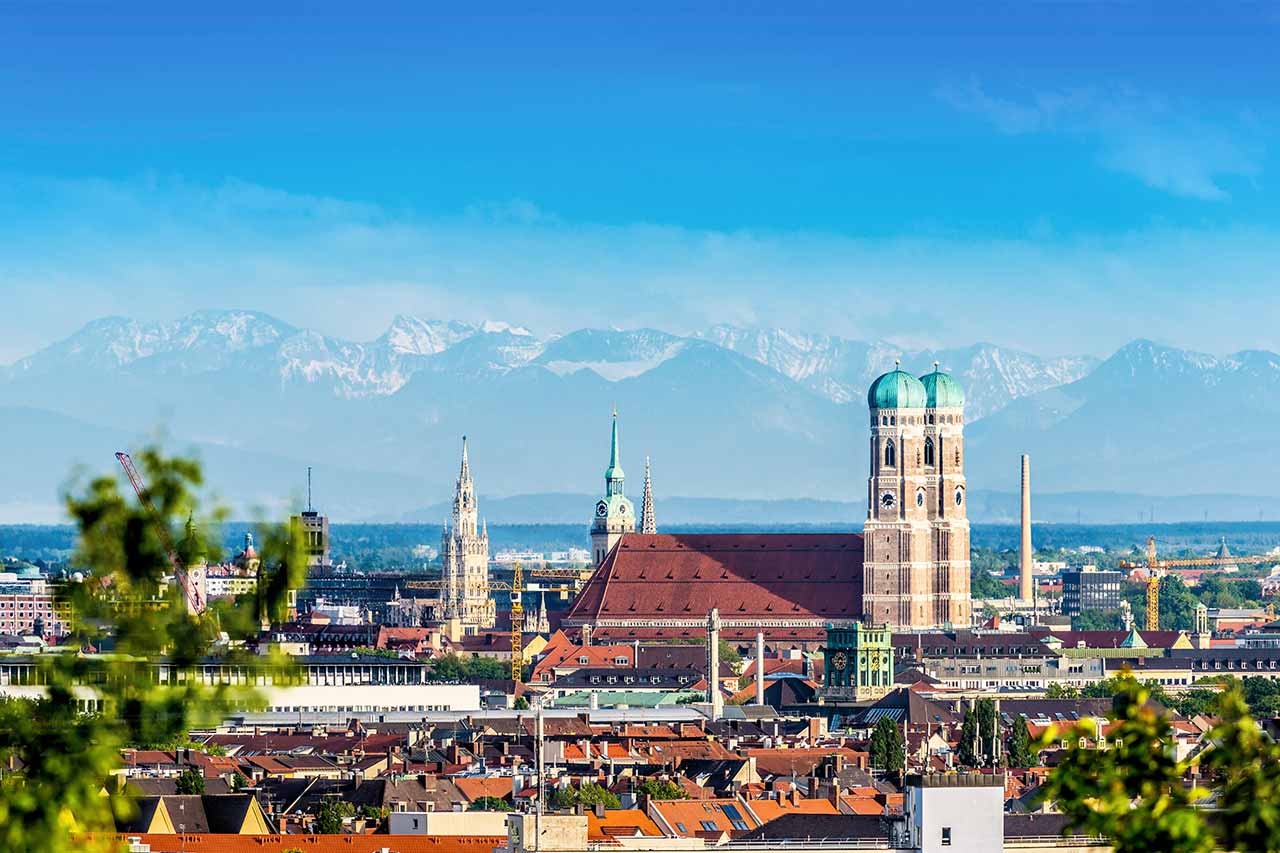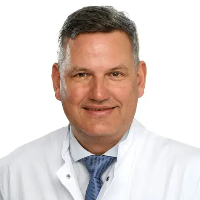
The program includes:
- Initial presentation in the clinic
- clinical history taking
- physical examination
- review of medical records
- laboratory tests:
- complete blood count
- general urine analysis
- biochemical analysis of blood
- indicators of inflammation (CRP, ESR)
- indicators blood coagulation
- x-ray examination
- preoperative care
- titanium osteosynthesis plates placement
- symptomatic treatment
- control examinations
- physiotherapeutic procedures
- orthopedic appliances
- the cost of essential medicines and materials
- nursing services
- full hospital accommodation
- explanation of future recommendations
Required documents
- Medical records
- X-ray examination, MRI/CT scan (if available)
Service
You may also book:
 BookingHealth Price from:
BookingHealth Price from:
About the department
The Department of Traumatology at the University Hospital of Ludwig Maximilian University of Munich offers the full range of diagnostics and treatment for acute and chronic, acquired and congenital musculoskeletal injuries of any severity. The department's doctors have excellent professional skills in the treatment of injuries of the lower and upper limbs, spine, and pelvis. In addition, the specialists have rich experience in providing medical care to patients with polytrauma. The department's operating rooms have advanced equipment to provide patients with effective medical care, including emergency care. The department also has the necessary equipment for performing navigation-assisted surgery. A competent team of doctors, which is ready to help in urgent clinical cases at any moment, works around the clock in the medical facility. The department is certified as a supraregional Trauma Center (DGU) and a Center for Severe Injuries (SAV). There is also a helipad for the delivery of seriously injured patients. The department is headed by Prof. Dr. med. Wolfgang Böcker.
The department regularly admits patients with spinal and pelvic injuries. Trauma surgeons treat injuries in all parts of the spine: cervical, thoracic, lumbar, and sacral. The most common injuries encountered in clinical practice are vertebral body fractures and dislocations, intervertebral disc injuries, spinal cord or spinal nerve compression due to injuries, anterior and posterior pelvic ring fractures, acetabular fractures, and others. In most cases, the treatment of spinal and pelvic injuries requires surgical interventions, which are among the most complex in traumatology and require the vast experience of surgeons and advanced surgical equipment. During operations, the department's specialists most often use minimally invasive and microsurgical techniques, while open operations are rarely resorted to. Traumatologists also care about the safety of treatment, so during the surgical interventions, they use intraoperative 3D imaging, navigation systems, and surgical microscopes.
The doctors working at the medical facility also have rich experience in treating polytrauma, for example, severe bone fractures combined with lacerations and injuries in the abdominal organs. The patients with polytrauma are treated and cared for in accordance with standardized protocols recognized throughout the world (for example, Advanced Trauma Life Support). The medical facility is one of the few in Germany, which has a modern room for antishock therapy in patients with highly severe injuries, including polytrauma. The department's specialists, together with the doctors from related specialties, do their best to cure the injury and give a patient a chance to return to their full lives.
The department also provides conservative and surgical treatment for injuries of the upper and lower limbs. Doctors are also competent at treating periprosthetic fractures (fractures of the bones next to a previously implanted endoprosthesis). The patients with such fractures undergo osteosynthesis or complex operations to replace prostheses.
The department's range of medical services includes:
- Treatment of injuries in elderly patients
- Spinal injuries
- Cervical spine injuries (for example, odontoid fracture)
- Vertebral fractures due to osteoporosis (traumatic and atraumatic)
- Pelvic injuries
- Pelvic ring fractures
- Upper limb injuries
- Shoulder fractures (proximal and distal)
- Wrist and forearm fractures
- Lower limb injuries
- Hip fractures
- Femoral fractures
- Lower leg fractures
- Fractures after joint replacement surgery or due to osteosynthesis
- Knee fractures after arthroplasty
- Bone fractures after surgical stabilization
- Prosthesis weakening and destruction
- Spinal injuries
- Treatment of spinal injuries
- Fractures and dislocations of the vertebral bodies in the cervical, thoracic and lumbar spine
- Intervertebral disc injuries
- Spinal cord or spinal nerve compression due to an injury
- Acute manifestations of paraplegia in the case of injuries
- Treatment of pelvic injuries
- Fractures of the anterior and posterior sections of the pelvic ring, iliac and sacral wings
- Acetabular fractures
- Treatment of upper limb injuries
- Clavicle fractures
- Shoulder dislocations
- Humeral head fractures
- Elbow injuries: olecranon fractures, fractures of the head of the radius, and fractures of the humeral condyles
- Distal radius fractures
- Hand fractures
- Fractures of the metacarpal bones and phalanges of the fingers
- Treatment of lower limb injuries
- Femoral fractures
- Tibial fractures
- Knee injuries: injuries of the cruciate ligaments and collateral ligament of the knee joint, cartilage injuries, patellar dislocations, and meniscus injuries
- Tendon tears: quadriceps tendon tears, patellar tendon tears, and Achilles tendon rupture
- Patella fractures
- Ankle fractures
- Hindfoot fractures
- Forefoot dislocations and fractures
- Toe fractures
- Treatment of polytrauma
- Bone fractures combined with lacerations and injuries in the organs of the abdominal cavity, chest, etc.
- Other medical services
Curriculum vitae
Professional Career
- 2017 President of the European Orthopedic Research Society Congress in Munich.
- 2014 President of the Osteology Congress, Munich.
- 2014 Head of the Department of Traumatology at the University Hospital of Ludwig Maximilian University of Munich.
- 2014 Spokesman of Upper Bavaria Trauma Network (Traumanetzwerk Oberbayern/München Süd).
- 2013 Managing Senior Physician, Department of Traumatology, University Hospital of Giessen and Marburg.
- 2013 Head of the Working Group on Osteology of the German Trauma Society.
- 2012 Senior Physician, Department of Traumatology, University Hospital Giessen and Marburg.
- 2011 Senior Physician, Section of Traumatology, Department of Surgery, Campus Grosshadern, University Hospital of Ludwig Maximilian University of Munich.
- 2009 Acting Head of the Department, Section of Traumatology, Department of Surgery, Campus Grosshadern, University Hospital of Ludwig Maximilian University of Munich.
- 2010 - 2012 Emergency Service Doctor (Intensivhubschrauber Christoph München), Campus Grosshadern, University Hospital of Ludwig Maximilian University of Munich.
- 2002 Research Fellow, Department of Surgery, Campus Innenstadt, University Hospital of Ludwig Maximilian University of Munich.
- 2008 Rotation, advanced training for board certification, Department of Orthopedics, University Hospital of Ludwig Maximilian University of Munich.
- 2006 - 2007 Rotation, advanced training for board certification, Berufsgenossenschaftlichen Unfallklinik Ludwigshafen, Department of Traumatology and Reconstructive Surgery, University Hospital Heidelberg.
- 2006 - 2007 Emergency Service Doctor (Rettungshubschrauber Christoph).
- 2002 - 2012 Emergency Service Doctor, NAW Munich-Mitte.
- 2000 - 2002 Resident, Johns Hopkins Hospital, Johns Hopkins University, Baltimore, Maryland, USA.
- 1996 - 1998 Assistant Physician and Intern, Department of Internal Medicine II, University Hospital Regensburg.
- 1996 One-year practice at the Medical College of Ohio, Toledo, Ohio.
- 1990 - 1996 Medicine studies at the Free University of Berlin.
Clinical Interests
- Treatment of injuries.
- Surgical treatment of bone fractures.
- Treatment of spinal injuries.
- Treatment of periprosthetic and peri-implant fractures.
- Treatment of fractures due to osteoporosis.
Memberships in Professional Societies
- 2015 Professional Association of Bavarian Surgeons.
- 2014 Working Group on Traumatology (Trauma AKADEMIE).
- 2013 Fragility Fracture Network.
- 2008 Professional Association of German Surgeons (BDC).
- 2007 Working Group Alumni Association (AOAA), and since 2011 Working Group on Traumatology.
- 2005 German Trauma Society (DGU).
- 2005 German Society for Stem Cell Research.
- 1996 Massachusetts Medical Society.
Review Activities
- Der Unfallchirurg.
- European Orthopaedics and Traumatology.
- Biomedical Materials.
- Zentralblatt für Chirurgie.
- Osteologie.
- Archives of Orthopaedic and Trauma Surgery.
- European Spine Journal.
- Notfall + Rettungsmedizin.
Photo of the doctor: (c) LMU Klinikum
About hospital
According to the Focus magazine, the University Hospital of Ludwig Maximilian University of Munich is regularly ranked among the best medical institutions in Germany!
The hospital is the largest multidisciplinary medical facility, as well as a leading research and training center in Germany and Europe. The hospital is proud of its bicentenary history and tirelessly confirms its primacy at the national and international levels. The outstanding quality of medical care is complemented by highly productive research activities, thanks to which many effective diagnostic and therapeutic methods, saving people’s lives, have been presented in medical practice.
The medical facility includes two main buildings, Grosshadern and Innenstadt. The hospital has 29 specialized departments, 53 interdisciplinary centers, 11 institutes, and many sections. More than 500,000 patients are treated here every year, which indicates the hospital's excellent reputation. A large and highly professional medical team, consisting of 1,800 doctors and 3,300 nursing staff, works for the benefit of patients. The hospital has 2,000 beds to accommodate patients.
The hospital's infrastructure deserves special attention: advanced diagnostic equipment that allows doctors to detect the slightest pathological changes in the human body, the latest operating rooms with highly efficient monitoring systems, robot-assisted surgical systems that facilitate sparing operations, and proper postoperative care.
Excellent technical resources and highly professional medical staff are undoubtedly the hospital's pride, but the medical facility also pays attention to the patient's comfort and to a humane attitude toward their life situation. When providing the necessary medical care, doctors and nursing staff always show a friendly attitude, inform patients in detail about the upcoming diagnostic and therapeutic procedures, gladly answer all questions of interest to patients, and provide moral support during the therapeutic process.
The hospital has many prestigious quality certificates, including a DIN EN ISO 9001 certificate, an IQM certificate, an endoCert certificate, certificates from the German Cancer Society (DKG) for treating various types of cancer, the German Cardiac Society (DGK), the German Society for Orthopedics and Trauma Surgery (DGOU), etc. Thus, patients can count on the best possible treatment outcome due to the use of the most effective and, at the same time, sparing therapeutic techniques.
Photo: (с) depositphotos
Accommodation in hospital
Patients rooms
The patients of the University Hospital of Ludwig Maximilian University of Munich live in comfortable, spacious, single and double patient rooms with a modern design. Each room is equipped with an ensuite bathroom with a shower and toilet. The furnishing of a standard patient room includes a comfortable bed, the position of which can be adjusted using the remote control, a locker for storing personal belongings, a TV, and a telephone. Also, if desired, you can connect to the Internet. In addition, patients can opt for enhanced-comfort rooms, with a safe, a fridge, and upholstered furniture.
The hospital has an excellent infrastructure. The medical facility’s area houses a bank, ATMs, a hairdresser, shops with a wide range of food, drinks, newspapers, magazines, and personal hygiene items, play areas for children, and a beautiful garden for walking, etc.
Meals and Menus
The patient and his accompanying person are offered a daily choice of three menus, including a vegetarian one. If you are on a specific diet for any reason, you will be offered an individual menu. Please inform the medical staff about your dietary preferences prior to the treatment.
Further details
Standard rooms include:
Religion
Religious services are available upon request.
Accompanying person
Your accompanying person may stay with you in your room or at a hotel of your choice during the fixed program.
Hotel
You may stay at a hotel of your choice during an outpatient program. Our managers will help you to choose the best option.
The hospital offers a full range of laboratory tests (general, hormonal, tests for infections, antibodies, tumor markers, etc.), genetic tests, various modifications of ultrasound scans, CT scans, MRI and PET/CT, angiography, myelography, biopsies, and other examinations. Treatment with medications, endoscopic and robotic operations, and stereotaxic interventions are carried out here, modern types of radiation therapy are also used. The hospital offers patients all the necessary therapeutic techniques.
- Allogeneic bone marrow transplantation
- Microsurgical transplantation of head and neck tissues
- Microsurgical resection of brain tumors with intraoperative fluorescence
- Minimally invasive treatment of spine pathologies
- Joint replacement with postoperative rehabilitation (fast track program)
Patients with benign and malignant neoplasms of various localizations, pathologies of arteries and veins, herniated discs, osteoporosis, congenital and acquired pathologies of the musculoskeletal system, benign and malignant pathologies of the mammary gland, and other pathologies.
Which specialties of the University Hospital of Ludwig Maximilian University of Munich are the best?
- Interventional and diagnostic neuroradiology
- Vascular surgery
- Cardiac surgery
- Mammalogy
- Gastroenterology and hepatology
Over 1,700 highly qualified doctors work at the hospital.
